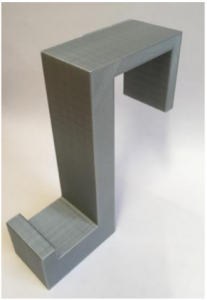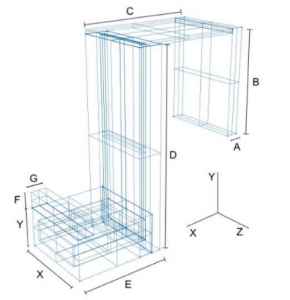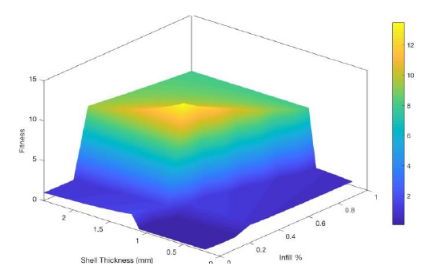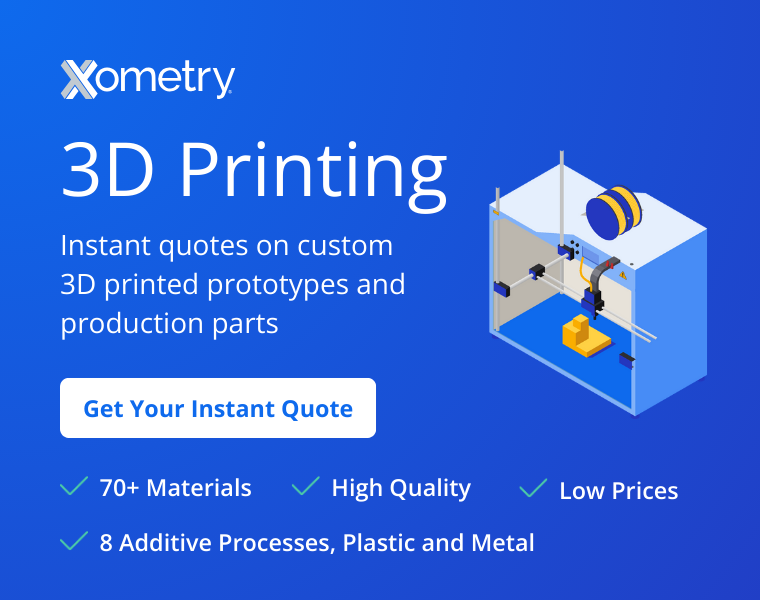 In a paper entitled “Democratising the design of 3D printed functional components through a hybrid virtual-physical design methodology,” a group of researchers discusses the need to better democratize 3D design in order to further democratize 3D printing itself. Currently, 3D printing is relegated to “highly skilled users,” the researchers point out, and needs to be made available to people of all skill levels for better uptake in industry, small and medium enterprises and in developing countries.
In a paper entitled “Democratising the design of 3D printed functional components through a hybrid virtual-physical design methodology,” a group of researchers discusses the need to better democratize 3D design in order to further democratize 3D printing itself. Currently, 3D printing is relegated to “highly skilled users,” the researchers point out, and needs to be made available to people of all skill levels for better uptake in industry, small and medium enterprises and in developing countries.
“Whilst some design tools do offer support for the user, none are able to select appropriate manufacturing parameters to ensure mechanical properties of the finished part,” the researchers state. “This is due to the lack of a robust method that is able to predict how a 3D printed part will behave.”
Previous work has been undertaken to achieve this through complex computational models that try to simulate the interactions between individual rasters and print layers.
“However, as previous work has found that mechanical properties can vary greatly in identical prints, and also that variation between printers and materials is significant, this paper presents an alternative approach that generates a best approximation of a part’s behavior through classical stress analysis based upon a knowledge base of empirically deduced part behaviors,” the researchers continue. “These can then be validated through physical testing of the manufactured part. In doing this, it can be considered to be a virtual-physical design method that exploits the affordances of each domain.”
 In the paper, the researchers describe combining design libraries with the affordances of both simulation and physical testing into an iterative design process. Simulation is used to reach an operative theoretical solution, which is then manufactured and validated through physical testing. Parametric and behavioral models are stored in a design library which a user would use to find their desired part, and would then input the part requirements.
In the paper, the researchers describe combining design libraries with the affordances of both simulation and physical testing into an iterative design process. Simulation is used to reach an operative theoretical solution, which is then manufactured and validated through physical testing. Parametric and behavioral models are stored in a design library which a user would use to find their desired part, and would then input the part requirements.
“Behavioural models allow a simulation of a part’s behaviour,” the researchers explain. “The simulation is carried out with classical analysis and a knowledge base of manufacturing parameters and how these affect the properties of printed parts. These define, for example, the expected geometric accuracy for a given printer, material and set of manufacturing parameters.”
The knowledge base would be constructed using experimentally determined data. Simulation, parametric models and physical testing would be repeated until a satisfactory part is made. The researchers tested their methodology by designing a load bearing, modifiable hook. The best generated design was 3D printed and tested to see if it met the user’s requirements. If the part’s actual behavior differs from the predicted behavior, the analytical model describing the part’s behavior is updated, and the simulation and physical testing cycle is then repeated. Their methodology, the researchers state, greatly reduces the skill level required and meets the requirements of a democratizing design methodology.
Further work will include:
- Manufacturing and validating the behavior of parts generated in the paper
- Using existing literature to expand the knowledge base
- Incorporating statistical models for printed part properties
- Exploring more complex design problems
Authors of the paper include Mark Goudswaard, Ben Hicks and Aydin Nassehi.
Discuss this and other 3D printing topics at 3DPrintBoard.com or share your thoughts below.
Subscribe to Our Email Newsletter
Stay up-to-date on all the latest news from the 3D printing industry and receive information and offers from third party vendors.
Print Services
Upload your 3D Models and get them printed quickly and efficiently.
You May Also Like
Heating Up: 3D Systems’ Scott Green Discusses 3D Printing’s Potential in the Data Center Industry
The relentless rise of NVIDIA, the steadily increasing pledges of major private and public investments in national infrastructure projects around the world, and the general cultural obsession with AI have...
Formlabs Teams Up with DMG MORI in Japan
In late June, Nick Graham, Chief Revenue Officer at Formlabs, announced on LinkedIn that the company had partnered with DMG MORI, one of the world’s leading machine tool companies, to...
EOS in India: AM’s Rising Star
EOS is doubling down on India. With a growing base of aerospace startups, new government policies, and a massive engineering workforce, India is quickly becoming one of the most important...
3D Printing News Briefs, June 25, 2025: R&D Materials, 3D Printed Veneers, & More
In today’s 3D Printing News Briefs, 3DXTECH has launched a program that gives customers early access to experimental materials, and the first Lithoz CeraFab Multi 2M30 in the Czech Republic...




































